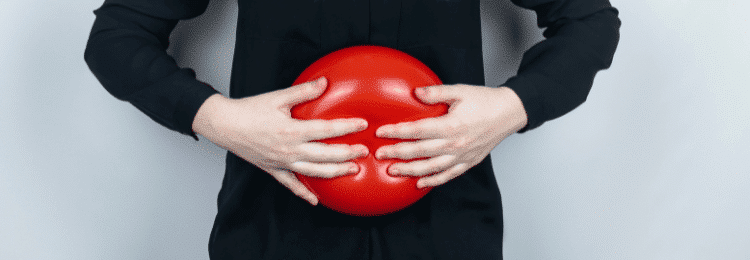Imagine running into a friend you haven’t seen in months, and their stomach has grown considerably. You might think, “Oh, they’ve put on some weight,” but what if they’re actually expecting a baby? The human body is a fascinating machine, and sometimes it’s hard to decipher the signs. One question that often arises is: how can you tell the difference between a fat belly and a pregnant belly? This is a sensitive and often misunderstood topic, so let’s dive into the world of bumps and baby bumps, with a focus on understanding and empathy.

Image: www.pinterest.com
It’s important to note that this article is not meant to diagnose or replace the advice of a medical professional. Everyone’s body is different, and there’s no one-size-fits-all answer for how a pregnant belly might look. Our goal is to provide information and clear the air around this potentially awkward conversation, fostering a space of understanding and inclusivity.
Understanding the Physical Differences
While the shape of a belly can vary based on individual body types and how far along a pregnancy is, there are some general distinctions between a fat belly and a pregnant belly.
The Shape: A pregnant belly will tend to protrude more prominently in the front, creating a pronounced bump that’s often described as being “round” or “egg-shaped.” This shape is due to the growing uterus pushing outwards and expanding, especially in the second trimester onwards. A fat belly, on the other hand, might be more evenly distributed, potentially leading to a slightly more rounded or protruding stomach, but it won’t have the same distinct “bump” as a pregnant belly.
The Texture: During pregnancy, the skin around the belly can become stretched and tight, visibly changing its texture. It’s often softer and smoother compared to the feel of skin in areas where someone has gained weight due to fat. Additionally, you might see some stretched stretch marks, which often appear as reddish or purplish lines, particularly during the third trimester. These stretch marks are a result of the rapid skin expansion caused by the growing uterus.
The Feel: A pregnant belly will often feel harder than a belly with extra fat. This hardness is due to the uterus and the baby within it. While there is a certain firmness to the skin and underlying muscles around a fat belly, it won’t have the same distinct firmness as a pregnant belly.
Beyond the Physical: The Emotional Side
Discussing a woman’s body, especially their belly, can be a sensitive topic. For pregnant women, the physical changes they experience can evoke a wide range of emotions. They might be overjoyed, anxious, nervous, or even self-conscious. It’s important to be mindful and respectful of these emotions.
If you’re unsure about a woman’s pregnancy, it’s best to err on the side of caution. For example, instead of asking outright, “Are you pregnant?” consider a more gentle approach. You could say, “You look great! How have you been?” This allows them to share their news in their own time.
The Impact of Social Stigma
Sadly, there is still a stigma around bodies and weight. People often make assumptions about a woman’s body, leading to unnecessary judgment and discomfort. It’s important to remember that women’s bodies are diverse, and that a growing belly doesn’t always signify pregnancy.

Image: www.mybump2baby.com
The Importance of Respect
Let’s be clear: It is never appropriate to comment on someone’s weight, whether they are pregnant or not. No one should feel pressured to answer personal questions about their body, especially if they’re feeling vulnerable or self-conscious. Let’s shift from a culture of body shaming to one that emphasizes respect, empathy, and understanding.
Fat Vs Pregnant Belly
Moving Forward with Kindness
Ultimately, the most important thing is to be considerate and respectful when discussing someone’s body. If you’re unsure about a woman’s pregnancy, err on the side of caution and avoid making assumptions. Instead of focusing on the changes someone may be experiencing, engage in conversations that promote positive and supportive interactions.
Remember, kindness and compassion go a long way, and they’re always the best choices when it comes to appreciating and respecting everyone’s unique journey.





